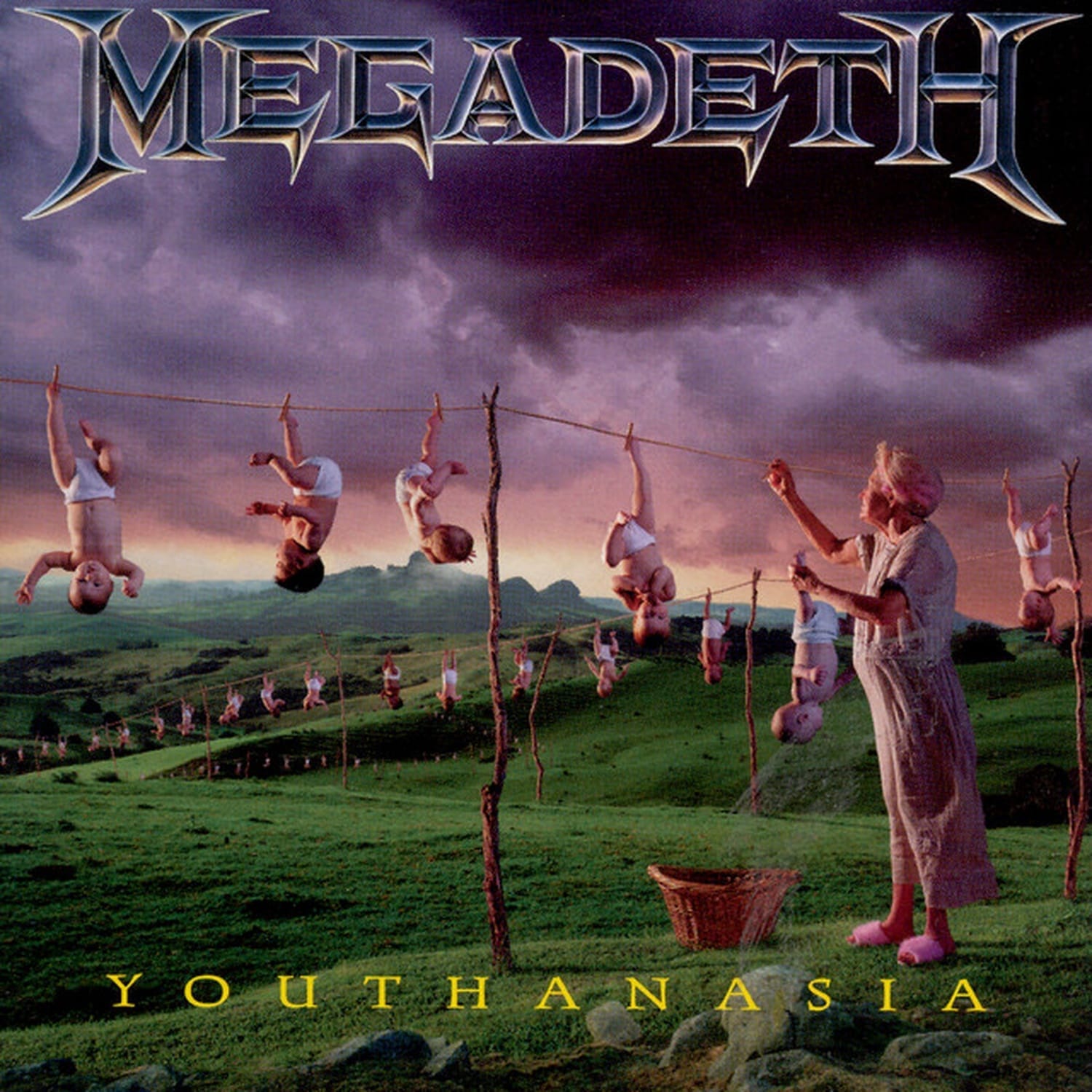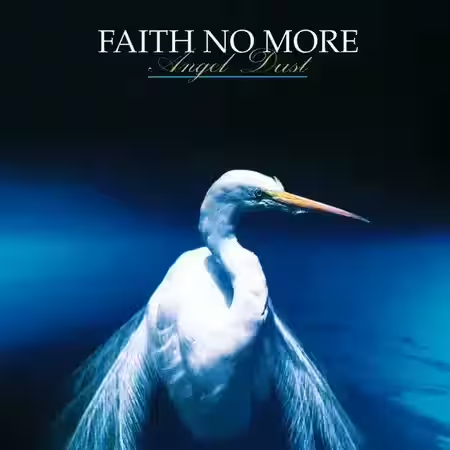
Introduction
Megadeth’s sixth studio album, “Youthanasia,” released on November 1, 1994, stands as a pivotal moment in the band’s illustrious career. Known for its thematic depth and musical evolution, the album showcases a band in transition, moving towards a more mainstream heavy metal sound. While some purists lamented the shift from their thrash roots, “Youthanasia” solidified Megadeth’s place in the broader heavy metal landscape.
This article delves into the album’s creation, recording process, commercial success, and its lasting impact on music and culture. We’ll explore the band’s journey leading up to “Youthanasia,” the challenges they faced during its production, and the legacy it leaves behind.
| Attribute | Details |
|---|---|
| Release date | November 1, 1994 |
| Album title | Youthanasia |
| Genre | Heavy Metal |
| Total runtime | 49:57 |
| Number of tracks | 12 |
| Record label | Capitol |
| Recording studio | a modular studio built in a warehouse in South Phoenix |
| Producer(s) | Max Norman, Dave Mustaine |
The album’s impact was profound, reaching number four on the Billboard 200 and achieving platinum status in multiple countries. Its themes of societal decay and the pressures of modern life resonated with listeners worldwide. Dave Mustaine once remarked, “We were trying to do something different, something new, and I think we succeeded.” This ambition is evident throughout “Youthanasia,” making it a significant entry in Megadeth’s discography.
The Genesis of “Youthanasia”
The genesis of “Youthanasia” can be traced back to the early 1990s, a time when Megadeth was riding high on the success of their previous album, Countdown to Extinction. Released in 1992, it was a commercial triumph, peaking at number two on the Billboard 200 and setting the stage for what was to come. The musical landscape was shifting, with grunge and alternative rock gaining prominence, prompting many metal bands to adapt their sound.
Megadeth’s evolution was influenced by internal dynamics as much as external trends. The band members—Dave Mustaine, David Ellefson, Marty Friedman, and Nick Menza—were keen to explore new musical territories. Mustaine, the driving force behind the band, sought to balance creative control with collaborative input from his bandmates. This approach was crucial in shaping the sound of “Youthanasia.”
The album’s title, a portmanteau of “youth” and “euthanasia,” reflected Mustaine’s concerns about the state of society and the challenges facing younger generations. The artwork, designed by Hugh Syme, depicted an elderly woman hanging babies on a clothesline, a striking visual metaphor for the album’s themes. Mustaine explained, “It’s about how we are raising our youth, the challenges they face, and the decisions we make as a society.”
| Band Member | Role |
|---|---|
| Dave Mustaine | Guitars, Vocals, Producer |
| David Ellefson | Bass |
| Marty Friedman | Lead Guitar |
| Nick Menza | Drums |
Financing the album was a collaborative effort between the band, Capitol Records, and producer Max Norman. Despite the success of their previous work, the band faced financial pressures, including the cost of building a new studio in Phoenix. Nevertheless, they persevered, creating an album that would become a cornerstone of their legacy.
Recording Process
The recording of “Youthanasia” began in early 1994, amidst a backdrop of anticipation and uncertainty. Megadeth had relocated to Phoenix, Arizona, to avoid the distractions of Los Angeles. The sessions took place at a modular studio built in a warehouse in South Phoenix, the studio was entirely designed by Max Norma. It was a makeshift space created specifically for the album’s production. This decision was driven by a desire for creative freedom and control over the recording environment.
Max Norman, a seasoned producer known for his work with Ozzy Osbourne and Megadeth’s previous albums, played a pivotal role in the recording process. His expertise in capturing the band’s evolving sound was invaluable. Alongside him, Dave Mustaine co-produced the album, ensuring that the band’s vision was fully realized.
The studio setup was an ambitious endeavor, aiming to incorporate cutting-edge technology of the time built into a temporary space inside a warehouse. While specific equipment details are scarce, it is likely that the sessions involved a mix of analogue and digital gear, reflecting the transitional nature of recording technology in the mid-1990s.
| Equipment | Details |
|---|---|
| Mixing Console | Assumed to be an analogue desk typical of the era |
| Microphones | Likely included Shure and Neumann models |
| Guitars | Jackson King V, Ibanez Destroyer II |
| Amplifiers | Marshall JCM800, Custom Audio Electronics 3+ Pre and VHT 2150 power |
One of the notable challenges was the attempt to record entirely digitally, using early iterations of Pro Tools. However, technical limitations necessitated a return to magnetic tape for some aspects of the recording. Despite these hurdles, the sessions were marked by a spirit of innovation and collaboration, resulting in an album that pushed the boundaries of Megadeth’s sound.
[videopress QwFv61X4]
Below is a table listing other albums produced by Max Norman and Dave Mustaine:
| Producer | Artist | Album | Year |
|---|---|---|---|
| Max Norman | Ozzy Osbourne | Blizzard of Ozz | 1980 |
| Max Norman | Ozzy Osbourne | Diary of a Madman | 1981 |
| Max Norman | Megadeth | Countdown to Extinction | 1992 |
Commercial Performance and Reception
“Youthanasia” was met with commercial success upon its release, debuting at number four on the Billboard 200. This achievement was a testament to Megadeth’s ability to captivate audiences despite shifting musical trends. The album sold 143,000 copies in its first week, eventually earning platinum certification in the United States and several other countries.
Below is a table showcasing the sales and certifications of Megadeth’s albums:
| Album Title | Sales | Year |
|---|---|---|
| Countdown to Extinction | 2,465,000 | 1992 |
| Youthanasia | 1,310,216 | 1994 |
| Rust in Peace | 1,200,000 | 1990 |
The album’s success was bolstered by the release of singles like “Train of Consequences” and “A Tout le Monde,” both of which charted on the Mainstream Rock Tracks chart. In terms of awards, “Youthanasia” received a platinum certification from the RIAA and similar accolades in other countries.
Other albums released in 1994 included:
- Superunknown by Soundgarden [5 million]
- Vitalogy by Pearl Jam [4 million]
- Ill Communication by Beastie Boys [3 million]
“Youthanasia” was a critical success as well, with many reviewers praising its mature sound and thematic depth. The album was seen as a bridge between Megadeth’s thrash roots and their exploration of new musical territories.
Singles and Track Analysis
The singles from “Youthanasia” played a crucial role in the album’s success, showcasing the band’s ability to craft songs that were both accessible and thought-provoking. The lead single, “Train of Consequences,” released on November 10, 1994, exemplified this balance, with its catchy riffs and introspective lyrics.
Below is a table listing the tracks on the album along with their writing credits:
| Track Name | Length | Writing Credit |
|---|---|---|
| Reckoning Day | 4:34 | Mustaine |
| Train Of Consequences* | 3:26 | Mustaine |
| Addicted To Chaos | 5:26 | Mustaine |
| A Tout Le Monde* | 4:28 | Mustaine |
| Elysian Fields | 4:03 | Mustaine, Friedman |
| The Killing Road | 3:57 | Mustaine |
| Blood Of Heroes | 3:57 | Mustaine |
| Family Tree | 4:07 | Mustaine |
| Youthanasia | 4:09 | Mustaine |
| I Thought I Knew It All | 3:44 | Mustaine, Friedman |
| Black Curtains | 3:39 | Mustaine |
| Victory | 4:27 | Mustaine |
Note: Songs marked with * were singles. “Train Of Consequences” reached #29 on the Mainstream Rock Tracks chart, while “A Tout Le Monde” is another notable single.

Influences and Legacy
“Youthanasia” was shaped by a variety of musical influences, from classic rock to the burgeoning alternative scene of the early 1990s. Megadeth drew inspiration from a diverse range of artists, seeking to blend their thrash metal roots with more melodic and accessible elements.
Below is a table illustrating the influences on “Youthanasia” and the artists it influenced:
| Influences on “Youthanasia” | Artists Influenced by “Youthanasia” |
|---|---|
| Classic Rock | Trivium |
| Alternative Rock | Avenged Sevenfold |
| Thrash Metal | Lamb of God |
Released in 1994, “Youthanasia” coincided with a year of significant cultural and global events. The North American Free Trade Agreement (NAFTA) was established, and the Zapatista uprising began in Mexico. In the world of entertainment, The Lion King dominated the box office, becoming the highest-grossing film of the year. Meanwhile, the music world was still reeling from the loss of Nirvana’s Kurt Cobain, who tragically passed away in April.
Five Things about Youthanasia
“Youthanasia” is a treasure trove of fascinating facts and stories that enrich its legacy. Here are five intriguing insights into the album:
| Fact | Details |
|---|---|
| Digital Recording Pioneers | “Youthanasia” was one of the first albums attempted to be recorded digitally using early Pro Tools technology. |
| Artwork Inspiration | The album cover, designed by Hugh Syme, was inspired by a line from the title track, “We’ve been hung out to dry.” |
| Title Origin | The title “Youthanasia” is a play on words, reflecting societal concerns about the well-being of youth. |
| Band Dynamics | The album marked a period of internal conflict, with Mustaine striving to maintain creative control while fostering collaboration. |
| Platinum Success | “Youthanasia” was certified platinum in the United States, Canada, and several other countries. |
Media and Television Usage
Despite its cultural impact, songs from “Youthanasia” have not been widely used in media. This could be attributed to the album’s thematic content and the band’s preference for maintaining control over their music’s usage.
We were unable to find any uses of songs from this album in media.
Critical Reviews and Retrospectives
Upon its release, “Youthanasia” received a warm reception from critics, many of whom praised its polished production and thematic depth. However, it also sparked debate among fans, with some longing for the raw aggression of Megadeth’s earlier works.
Below is a table summarizing critical reviews of the album:
| Publication | Review Score | Notable Quotes | Source |
|---|---|---|---|
| Sputnikmusic | 4.0/5 | “An excellent continuation of Megadeth’s evolution.” | Read more |
| Encyclopaedia Metallum | 75% | “A fun and entertaining album, showcasing the band’s growth.” | Read more |
After Youthanasia
Following the release of “Youthanasia,” Megadeth continued to evolve, both musically and personally. The band embarked on extensive tours, further cementing their status as heavy metal icons. However, the late 1990s and early 2000s were marked by challenges, including lineup changes and Mustaine’s ongoing battle with addiction.
Despite these hurdles, Megadeth persevered, releasing several more albums and experimenting with different musical styles. Notable releases during this period include “Cryptic Writings” and “Risk,” both of which showcased the band’s willingness to push boundaries.
As of October 2023, Megadeth remains active, with Dave Mustaine at the helm. The band continues to tour and release new music, maintaining their relevance in a constantly changing industry.
Remasters and Reissues
The legacy of “Youthanasia” has been preserved through various remasters and reissues, offering fans the opportunity to experience the album in new and enhanced formats. These releases have included remastered audio, bonus tracks, and detailed liner notes, providing deeper insights into the album’s creation.
Below is a table of remasters and reissues of “Youthanasia”:
| Edition | Format | Release Date |
|---|---|---|
| Remastered Edition | CD, Digital | July 27, 2004 |
The 2004 remastered edition is particularly noteworthy, featuring improved sound quality and additional content that enriches the listening experience. It stands as a testament to the album’s enduring appeal and Megadeth’s commitment to preserving their musical legacy.
Conclusion
“Youthanasia” remains a landmark album in Megadeth’s discography, representing a period of growth and exploration for the band. Its themes of societal decay and personal introspection continue to resonate with listeners, making it a timeless piece of heavy metal history.
For further reading, explore our related articles and podcasts:
- Blog: The Making of Countdown to Extinction by Megadeth
- Blog: Megadeth – Rust In Peace
- Blog: Megadeth – Peace Sells… but Who’s Buying?
For more information, visit the Wikipedia page for “Youthanasia”, the Official Megadeth website, and the Capitol Records website.
Let us know in the comments what your thoughts are on Youthanasia by Megadeth. Did we miss anything? Share your experiences and join the conversation!



